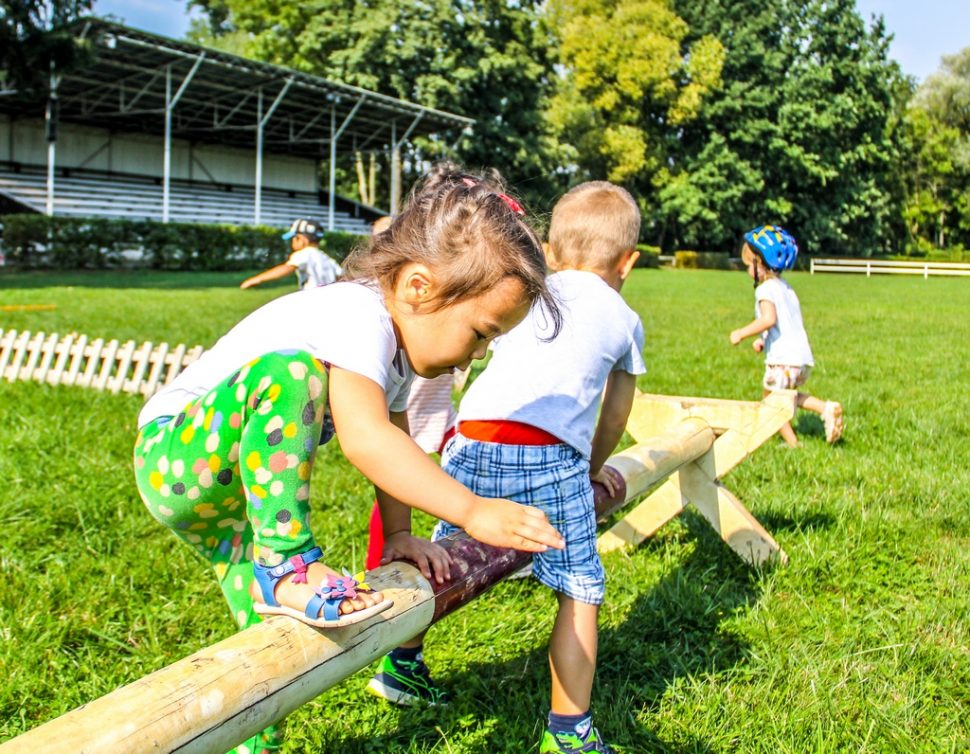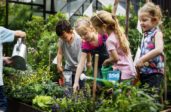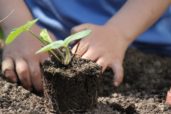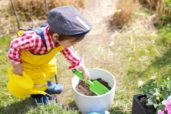Healthy exercise in preschool age

For preschool children, movement is natural. The child needs about 6 hours of exercise per day, of which the vast majority (4.5 hours) are spontaneous physical activity. In our kindergarten, we follow this recommendation and pay attention to the active movement regime of children.
What children should learn
Preschool age is significant mainly because in the range of almost three years there is a big shift in the development of the individual in the physical and mental as well as social sphere. Therefore, this period is important to master movement skills. At this age, the child’s independence, self-assertion and adaptation to the society of peers and adults are typical. Children intuitively and imaginatively process information, try to cope with new tasks and use in practice what they already know. The activities are dominated by the game, which influences the further development of motor abilities and skills, thinking, learning, feelings and imagination. Children coordinate their movements, develop fine motor skills and dexterity.
In kindergarten, children should develop locomotor, non-locomotor and manipulation skills, support their physical fitness and cognitive and affective area. Educational goals begin with a basic awareness of one’s own body, continue with the development of motor skills, abilities and fitness, and end with the development of healthy life habits.
Through physical activities, we strengthen and develop the child’s muscular and aerobic fitness. Children should be able to move in simple movements for a long time, strengthen and relax the body as instructed, exercise as instructed, or be able to breathe properly. In the cognitive and affective area, children should learn to name and know different parts of the body, know the terms used in movement and sports environment, be able to follow the agreed rules, be able to cooperate and not be afraid in different environments (water, snow). The course also includes hygienic habits and rules of safe movement.
Children also learn and develop during movement games. Thanks to them, children learn to follow the rules, make independent decisions and develop social skills. The child’s movement is cultivated: When the child perceives his own body and orients himself in the body scheme, orients himself in space, perceives and distinguishes different intensities and cultivates social skills, movement improves in quality.
Although our primary goal is to improve a certain motor skill, physical activity also contributes to mental development. Children will learn to know the rules and rhyme well (memory development), to pronounce the rhyme clearly (so that others can understand and answer me), to respond to the signal (when I can run over), to improve orientation in space (to not be caught like a fish, I have to be able to escape , ie to map and estimate where the fisherman will run and, conversely, in order to catch as many fish as possible, I have to strategize – development of thinking) and also react to others (try not to bump into them while running – social skills).
How it works with us
In our kindergarten we lead children to all-round physical development and habits of correct posture, we include activities suitable for the proper development of the spine. We know that for children, exercise must be a fun game, so activities have a playful form. We often change activities because children’s attention is still limited. Physical education activities (physical activities) are a regular daily activity in the daily program of the kindergarten. In addition to the interior, the kindergarten has an outdoor play area, which is completely separated and protected from sun by high trees. The school garden is a safe place for fun and learning in the open air, children can play and exercise there. Thanks to the convenient layout of the building, children can stay outside even in bad weather.
A few tips for home
Since children try to imitate the sports activities of adults, we offer you a few tips for easy movement games that you can easily master with children.
Playing the statue
We choose the seller and the customer. The others play statues. When the customer arrives, the seller shows him the statues. We play music and the statues start dancing. When the music stops, the sculptures freeze again. The customer chooses the statue he likes the most. The customer pays for the statue by singing, exercising, performing a scene, telling a joke, cleaning the room, etc.
What time is it, Mr. Wolf?
You stand in a row next to each other and one participant stands in front and calls: “Hey Mr.Wolf!” The others respond: “What time is it?“ The caller determines the number and type of steps. „Ant steps“ are tiny, in the case of „hen“ steps, we palce one foot just behind the other, „frog steps“ are jumps, „elephant steps“ are huge ones. You can come up with more. The first person in the group to get to the caller replaces him.
Magic wand
Use a magic wand to turn selected participants into animals. They then imitate animal behavior. (The stork stands on one leg, the frog jumps, the dog walks on all fours, the cat cuddles, the bird flutters its wings, the bunny squats and move its nose, etc. At the same time, the children learn to respond to instructions and changes.
The stork lost its cap
Say the poem and clap your outstretched arms in front of you (stork’s beak). „The stork lost its cap, the color was … “. You say the color and the child must find the color around it as quickly as possible and touch it.
Riding on a push bike or tricycle
Recently, push bikes and tricycles are very popular, they have a wide seat that supports the proper development of the child’s hip joints. Large muscle groups are involved in the movement – bounce – which supports mobility and properly develops motor skills. The child maintains balance while getting on and during the ride and at the same time strengthens the back muscles. When driving and riding, the child engages the muscles of the hands and develops coordination of the whole body.


